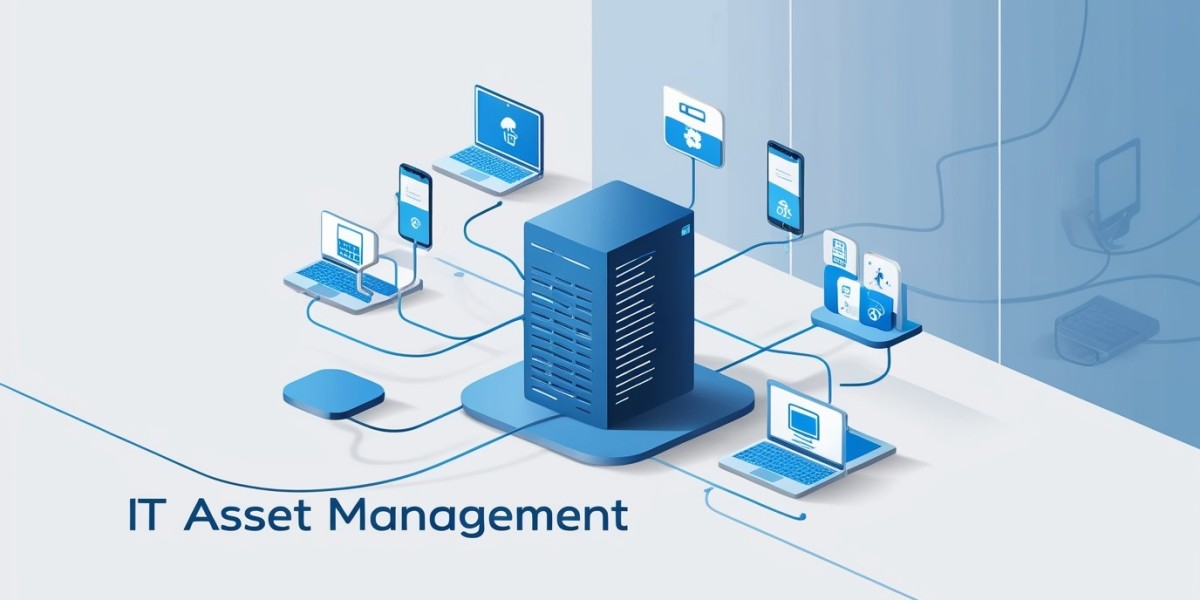In today's digitally driven world, IT assets are the backbone of every modern organization. From servers and laptops to software licenses and cloud subscriptions, managing these assets efficiently can make or break operational success. That’s where IT Asset Management (ITAM) comes in—a strategic approach that helps businesses gain complete visibility and control over their IT inventory.
Whether you're a growing startup or a multinational enterprise, understanding the fundamentals of IT asset management is crucial to reducing costs, minimizing risks, and ensuring compliance.
What Is IT Asset Management?
IT Asset Management (ITAM) is the process of cataloging, tracking, maintaining, and disposing of an organization’s IT assets throughout their lifecycle. These assets can include
Hardware: laptops, desktops, servers, printers, and and networking devices.
Software: applications, operating systems, licenses, and cloud-based tools.
Digital assets: subscriptions, APIs, data sets, and more.
ITAM integrates with other business functions like finance, procurement, security, and IT support to help businesses optimize performance, ensure compliance, and avoid unnecessary costs.
Request a quote at https://ess.net.in/it-asset-management/.
Why Is IT Asset Management Important?
Without a solid ITAM system, companies often find themselves with overlapping software licenses, underused hardware, security vulnerabilities, and poor budgeting. Here’s why ITAM is indispensable:
1. Cost Optimization
Tracking usage prevents redundant purchases and identifies underutilized assets, helping companies cut unnecessary spending.
2. Compliance & Risk Management
ITAM helps businesses stay compliant with license agreements, audits, and data protection laws, avoiding hefty penalties.
3. Operational Efficiency
With an accurate inventory of assets, support teams resolve issues faster and manage resources more effectively.
4. Lifecycle Management
From procurement to disposal, ITAM ensures every asset is used to its full potential and decommissioned responsibly.
The Lifecycle of IT Asset Management
ITAM isn't just about inventory; it's about managing every stage of an asset's journey:
1. Planning & Procurement
Organizations determine the need for IT assets based on business goals. During procurement, ITAM systems record vendor details, warranty information, and total cost of ownership.
2. Deployment
Once an asset is received, it's assigned, configured, and installed for use. ITAM ensures proper tagging and documentation.
3. Usage & Maintenance
Throughout its life, the asset is monitored for performance, security updates, license renewals, and maintenance schedules.
4. Retirement & Disposal
At the end of their useful lives, IT assets are either repurposed, sold, recycled, or destroyed—ideally with secure data wipe processes to prevent breaches.
Types of IT Assets
IT assets can fall into several categories, each with its own management requirements:
Fixed Assets: laptops, desktops, routers, and and switches.
Mobile Assets: Smartphones, tablets, portable drives.
Cloud Assets: SaaS subscriptions, cloud instances, and and storage.
Software Assets: Operating systems, productivity tools, and and cybersecurity applications.
Contact us at https://ess.net.in/contact/.
IT Asset Management Best Practices
To maximize the benefits of ITAM, businesses should adopt the following best practices:
1. Centralized Asset Repository
Maintain a single source of truth where all asset information is logged and updated in real time.
2. Automated Discovery Tools
Use software that scans your network to detect and record connected devices, ensuring accuracy and reducing manual effort.
3. Regular Audits
Conduct periodic audits to compare physical assets with your records. This helps detect discrepancies, ghost assets, and compliance issues.
4. Lifecycle Tracking
Track assets from acquisition to disposal, including warranty periods, usage metrics, and replacement schedules.
5. User Access Control
Assign ownership and permissions to ensure accountability and prevent misuse of resources.
Choosing the Right IT Asset Management Tool
Selecting the right ITAM tool depends on the size of your business, asset complexity, and integration requirements. Popular tools include
ServiceNow
ManageEngine AssetExplorer
Ivanti IT Asset Management
Freshservice
Snipe-IT
Look for tools that offer features like automated discovery, reporting dashboards, integration with help desk systems, and compliance alerts.
Benefits of Outsourcing ITAM
For businesses that lack internal resources, outsourcing IT asset management to specialized providers can be a game-changer. Benefits include:
Access to expert knowledge
Use of advanced tools without upfront investment
Scalable service as the business grows
Cost savings through optimization and reduced wastage
Future Trends in IT Asset Management
As businesses embrace remote work, IoT, and cloud-first strategies, ITAM continues to evolve. Here are some trends to watch:
AI-driven analytics for asset forecasting
Cloud-native ITAM tools
Sustainability tracking for green IT initiatives
Integration with CMDB and IT Service Management (ITSM)
Modern ITAM isn't just about managing assets—it’s about aligning technology with strategic goals.
Effective IT asset management is more than inventory tracking; it’s a strategic function that boosts productivity, ensures compliance, and saves money. As your business scales and technology evolves, investing in robust ITAM systems and processes is no longer optional—it’s essential.
By implementing ITAM best practices and leveraging the right tools, organizations can unlock the full value of their IT investments while preparing for the challenges of tomorrow.
About us
At ESS, we understand the intricate demands of the modern business landscape. As a premier enterprise IT solutions company, we are committed to empowering organizations with cutting-edge technology and innovative solutions. Our mission is to seamlessly integrate technology into your business processes, ensuring efficiency, scalability, and long-term success.
OUR CONTACT






